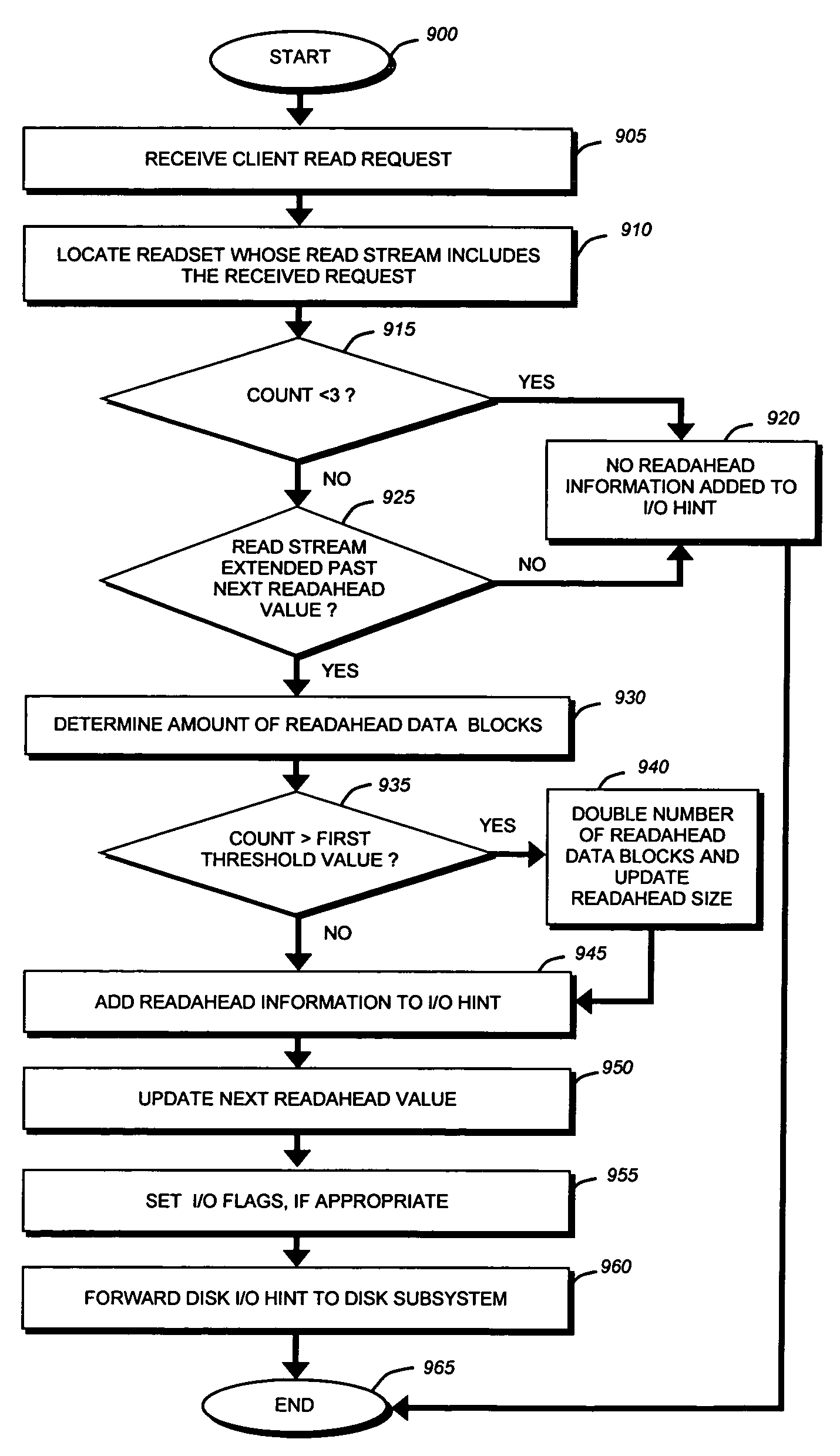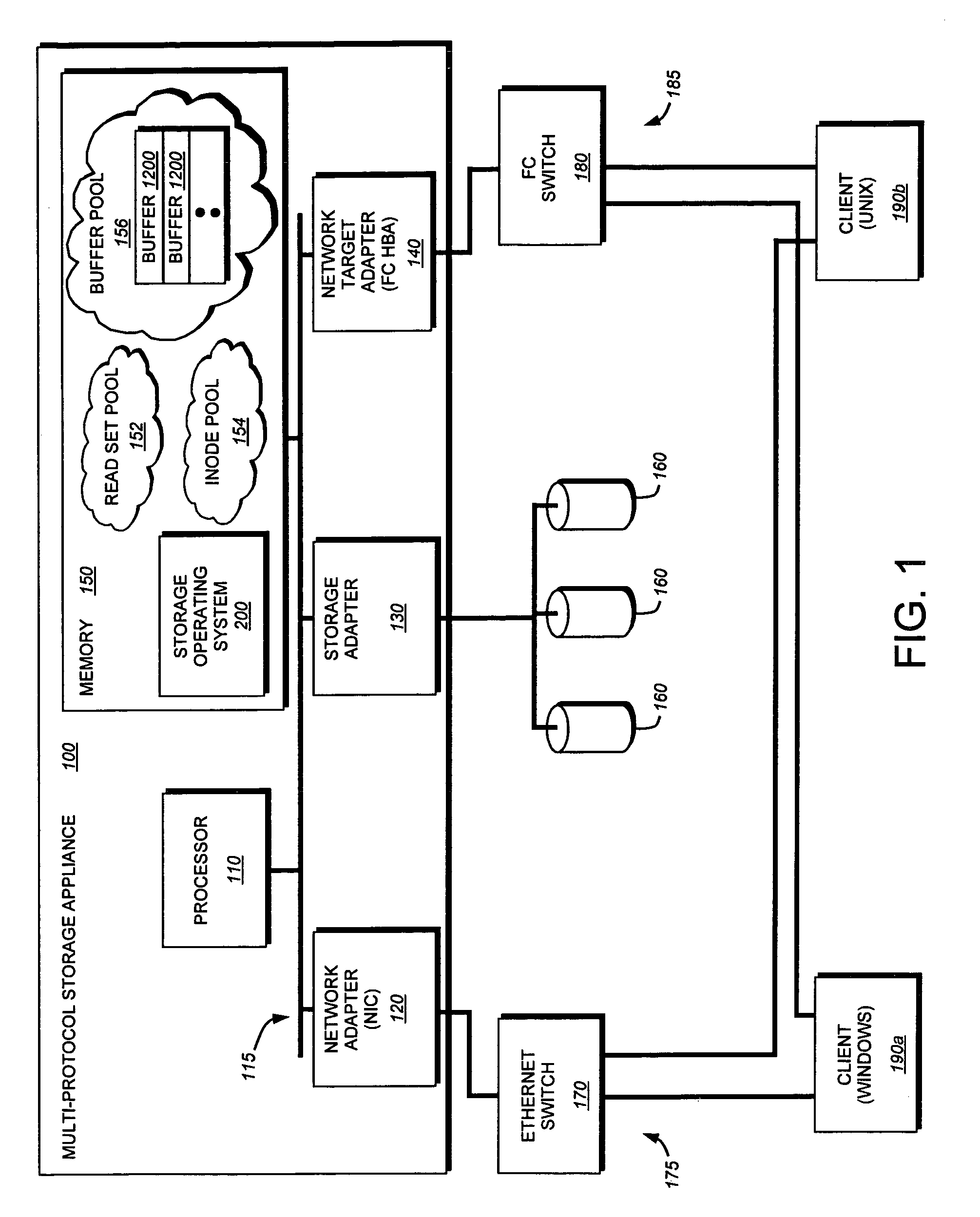Adaptive file readahead based on multiple factors
a file and multiple factor technology, applied in memory systems, memory adressing/allocation/relocation, instruments, etc., can solve the problems of excessive buffer memory in storage systems, excessive readahead data blocks, and inconvenient storage, so as to reduce cache pollution.
- Summary
- Abstract
- Description
- Claims
- Application Information
AI Technical Summary
Benefits of technology
Problems solved by technology
Method used
Image
Examples
Embodiment Construction
A. Storage System
[0032]FIG. 1 is a schematic block diagram of the multiprotocol storage appliance 100 configured to provide storage service relating to the organization of information on storage devices, such as disks 160. The storage disks may be arranged in various configurations, such as a redundant array of independent disks (RAID). The storage appliance 100 is illustratively embodied as a storage system comprising a processor 110, a memory 150, a plurality of network adapters 120, 140 and a storage adapter 130 interconnected by a system bus 115.
[0033]In the illustrative embodiment, the memory 150 comprises storage locations that are addressable by the processor 110 and adapters 120, 140 for storing software program code and data structures associated with the present invention. Portions of the memory may be organized as an inode “pool”154 containing one or more inode data structures and a readset pool 152 containing readset data structures. Another portion of the memory may be ...
PUM
 Login to View More
Login to View More Abstract
Description
Claims
Application Information
 Login to View More
Login to View More - R&D
- Intellectual Property
- Life Sciences
- Materials
- Tech Scout
- Unparalleled Data Quality
- Higher Quality Content
- 60% Fewer Hallucinations
Browse by: Latest US Patents, China's latest patents, Technical Efficacy Thesaurus, Application Domain, Technology Topic, Popular Technical Reports.
© 2025 PatSnap. All rights reserved.Legal|Privacy policy|Modern Slavery Act Transparency Statement|Sitemap|About US| Contact US: help@patsnap.com



